Buzludzha monument
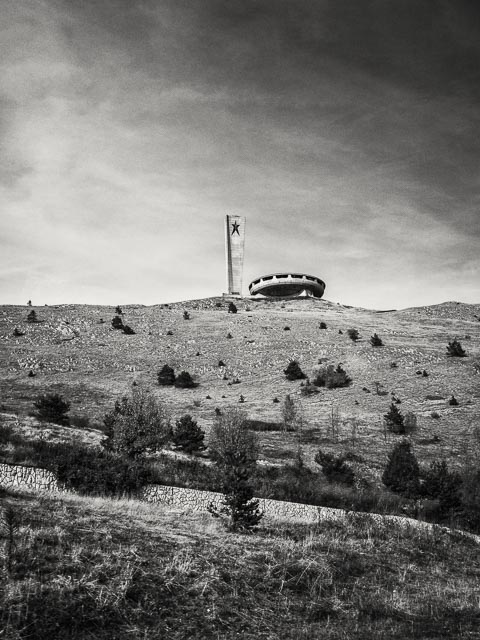
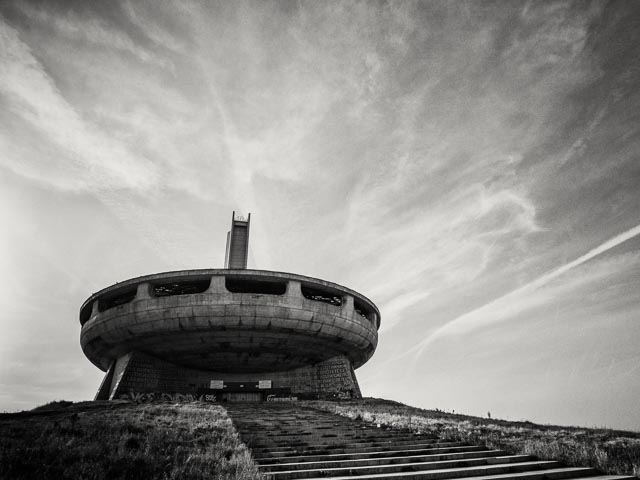
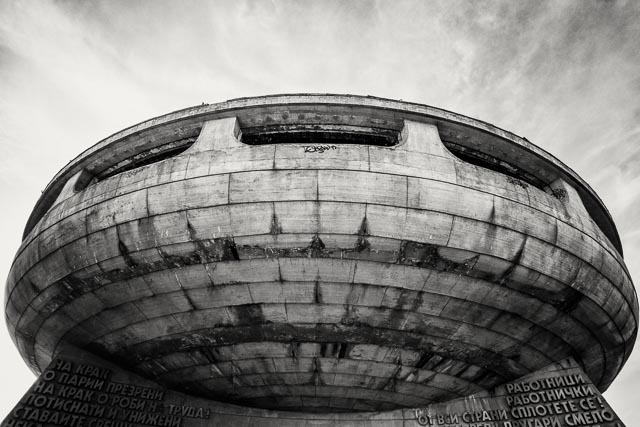
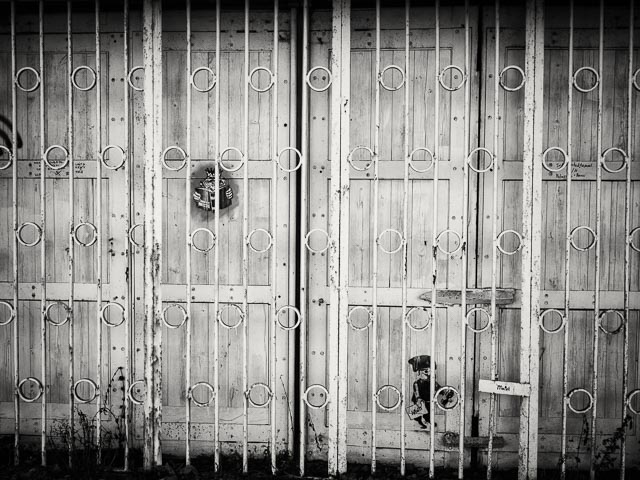
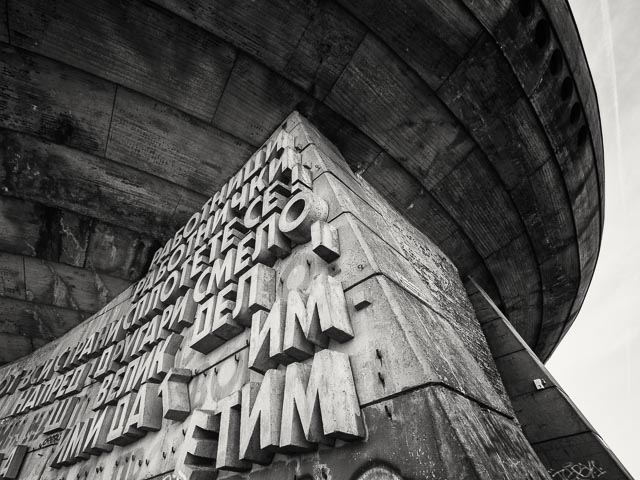
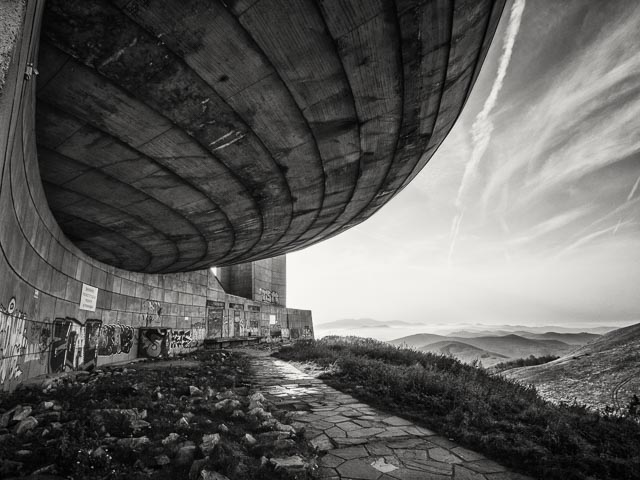
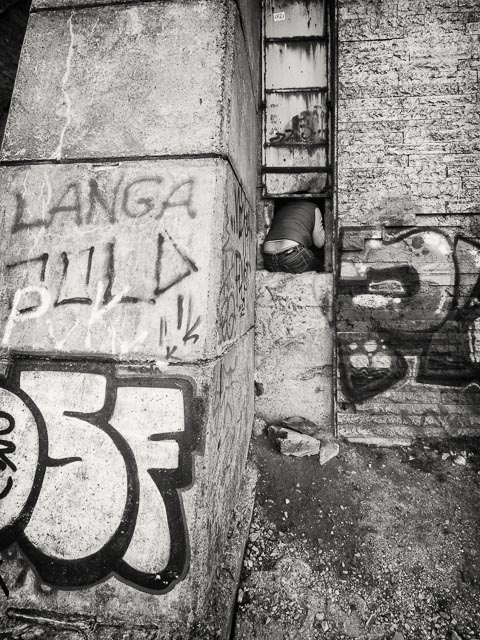
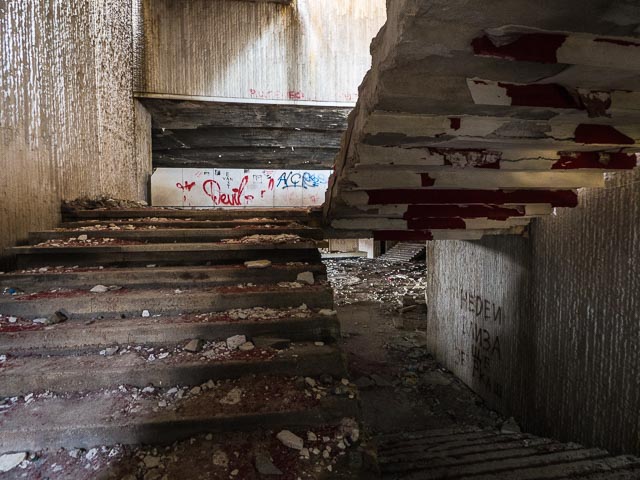
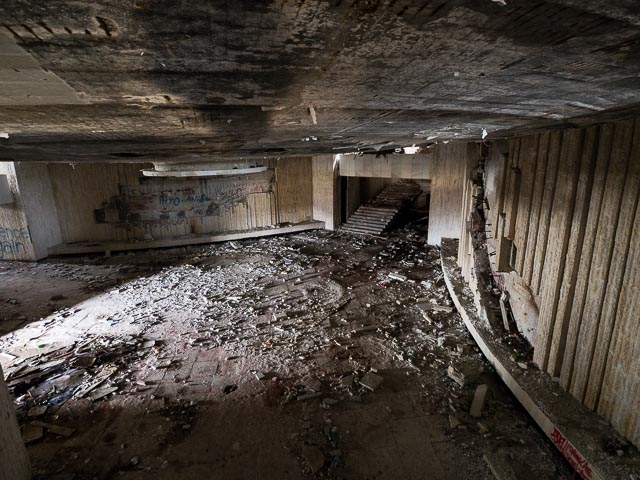
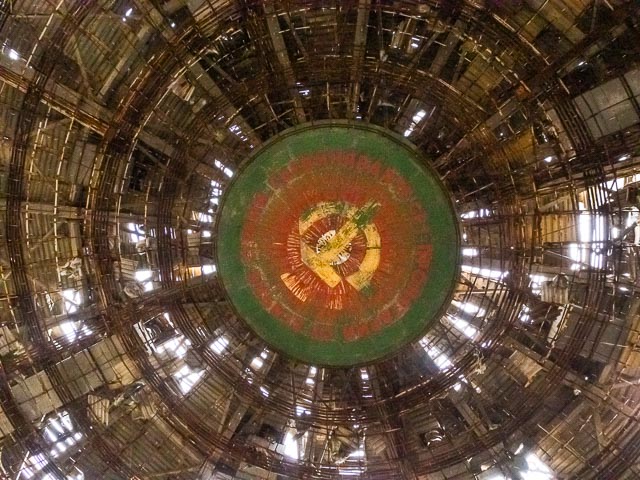
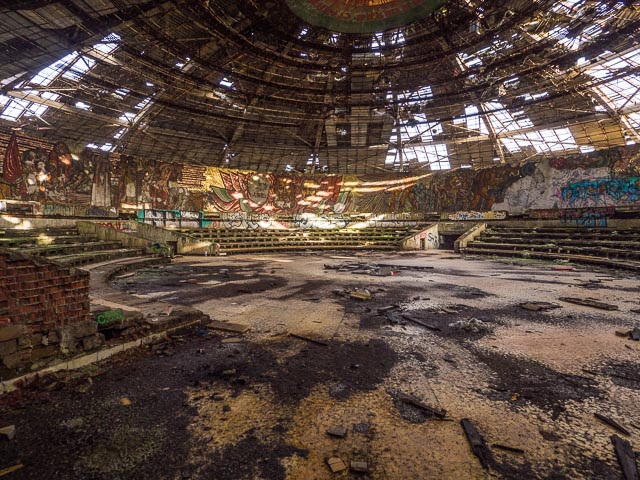
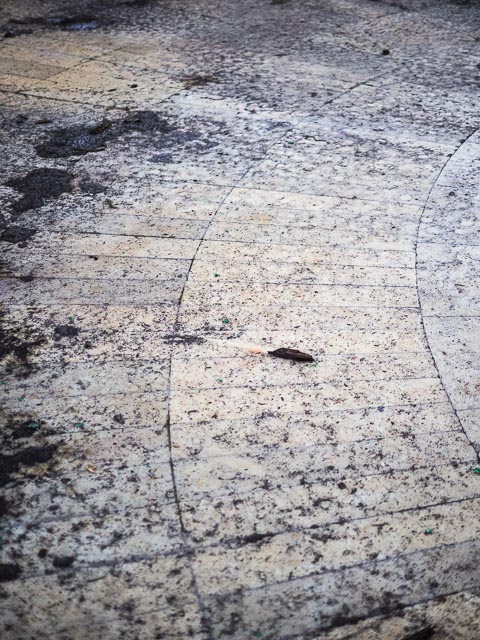
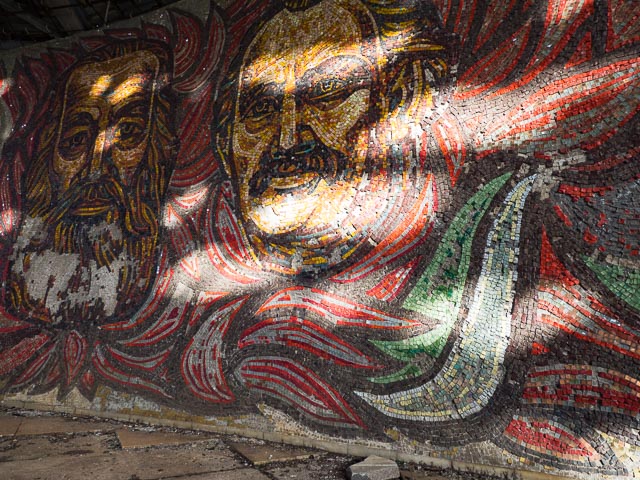
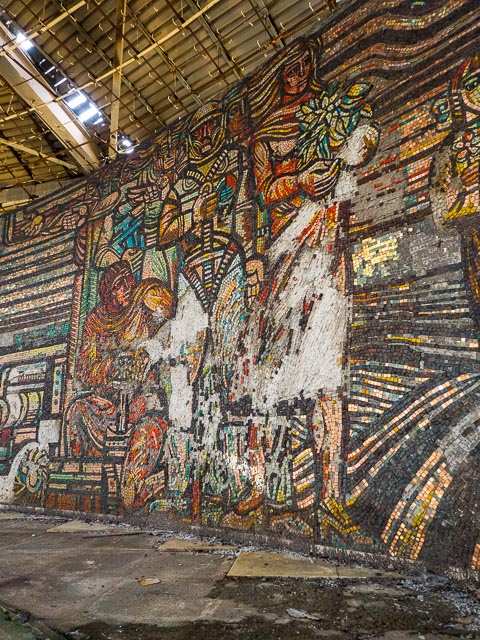
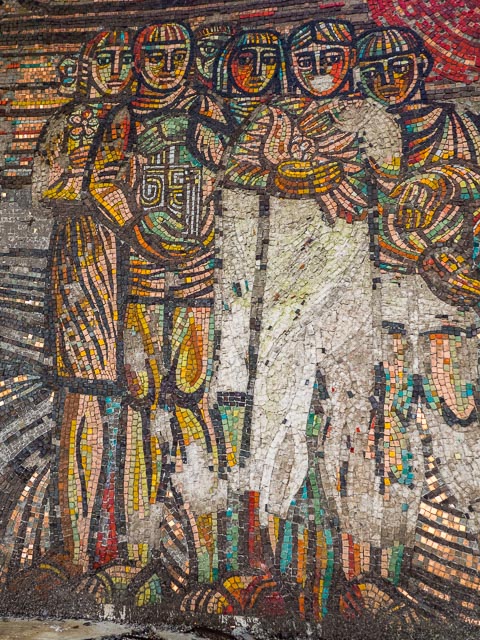
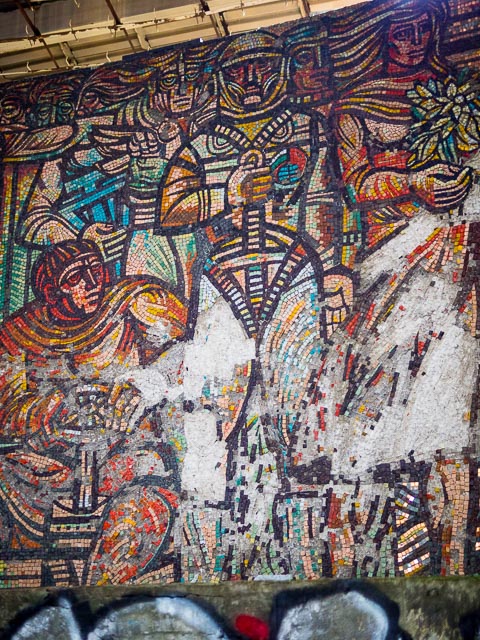
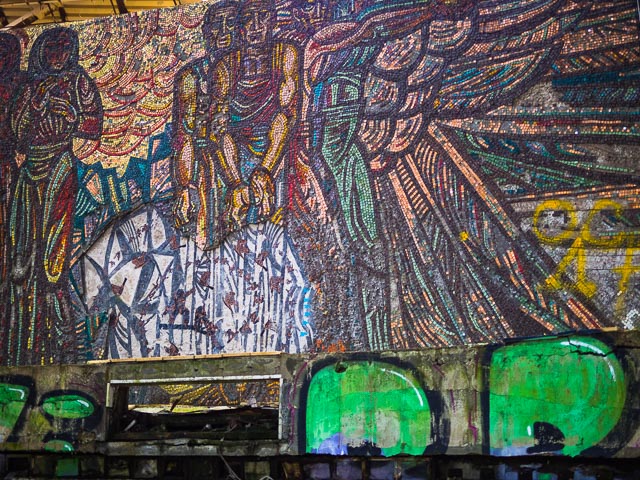
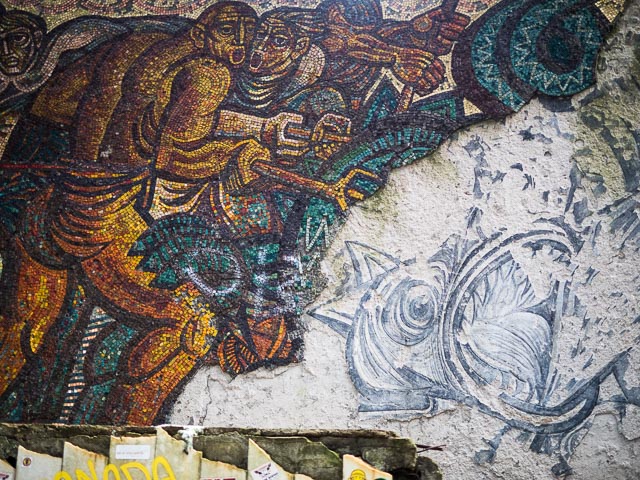
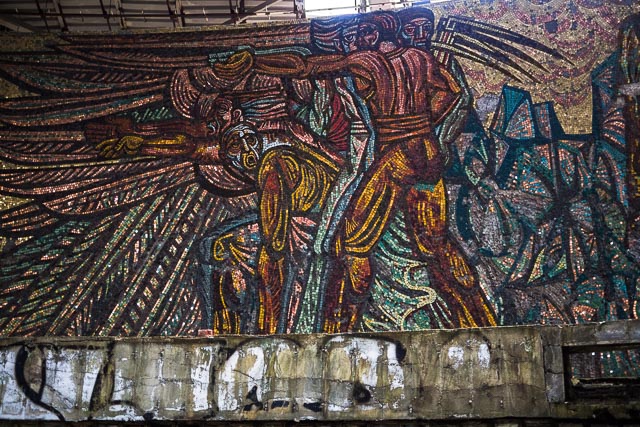
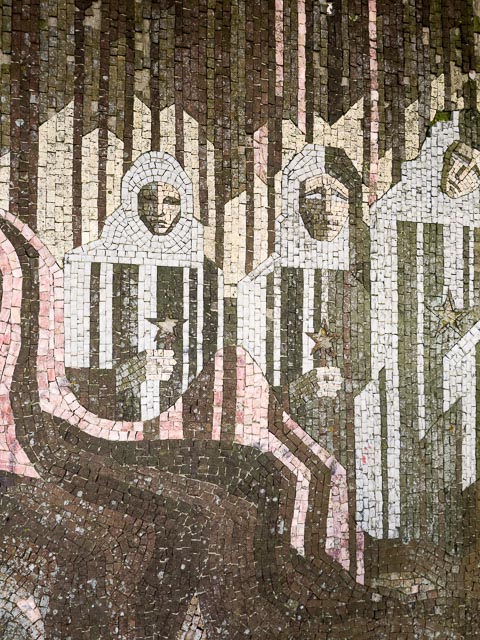
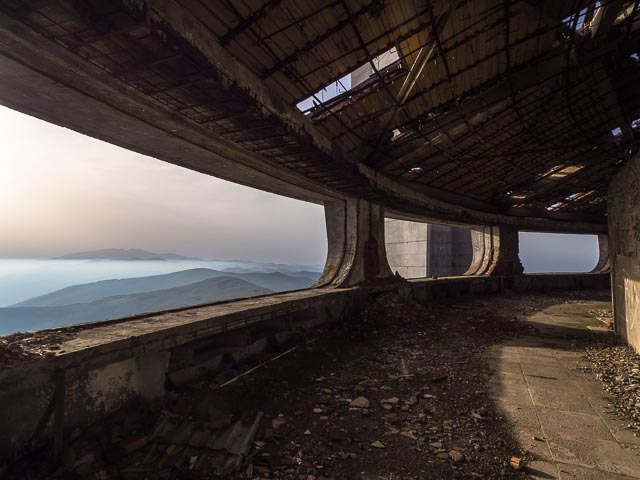
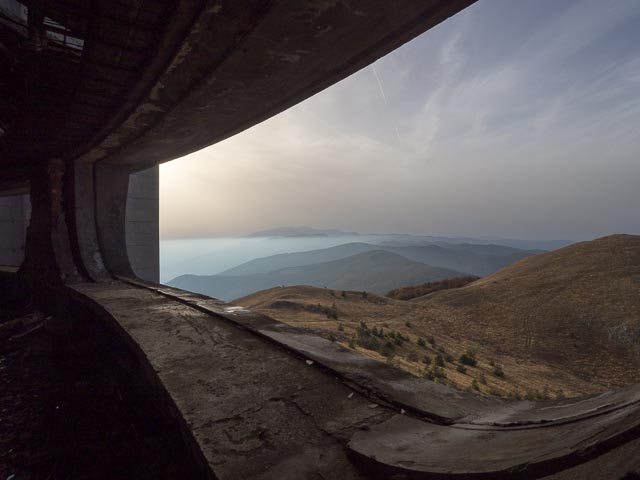
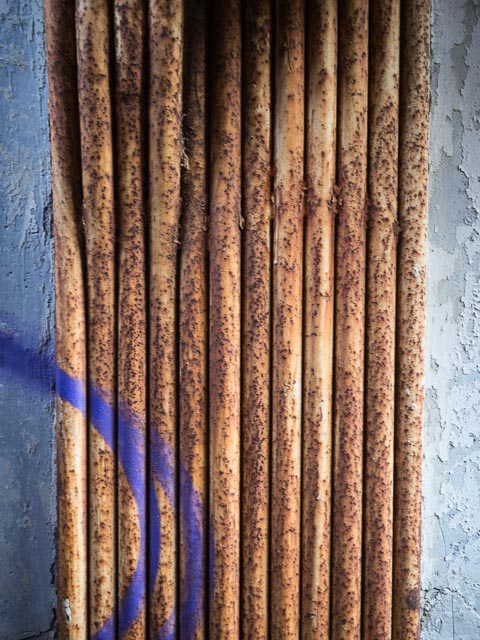

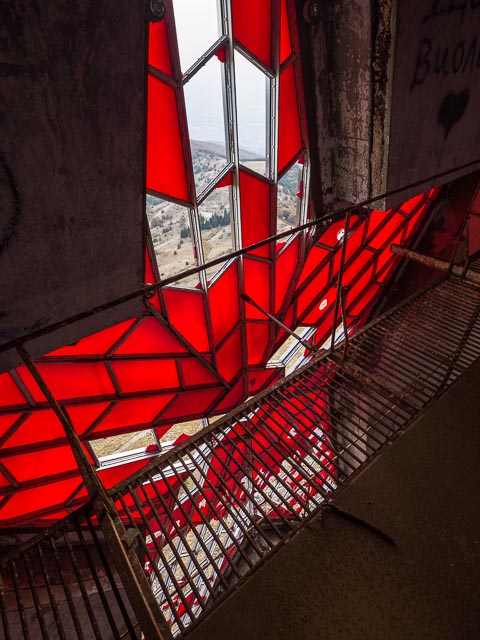
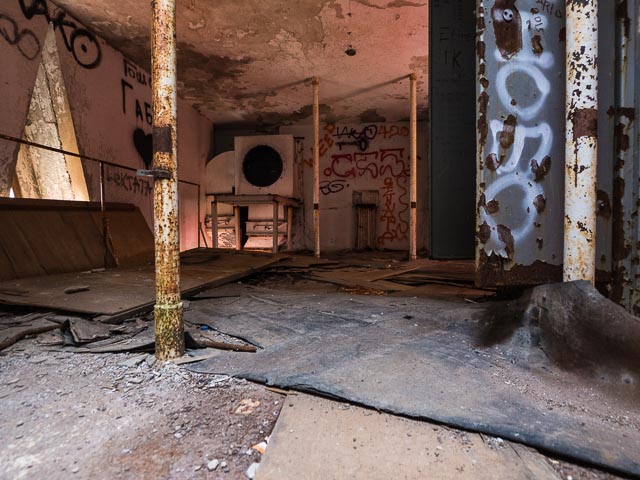
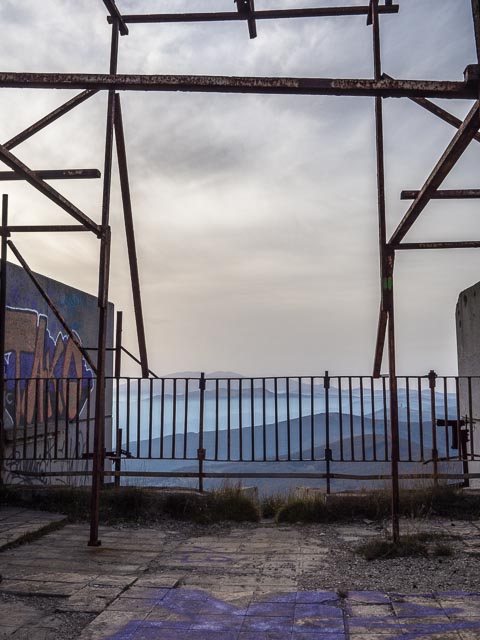
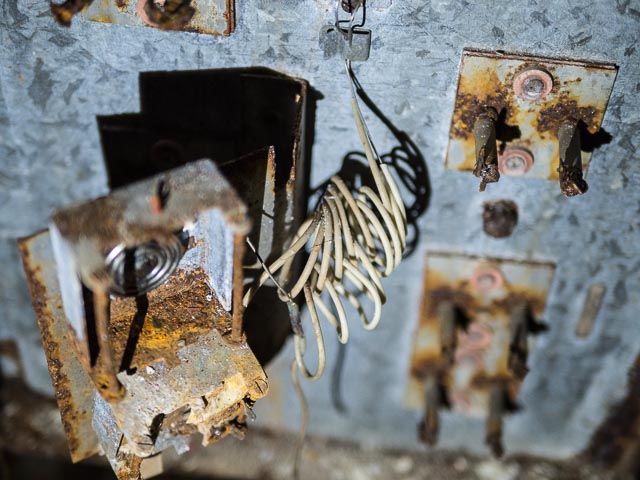
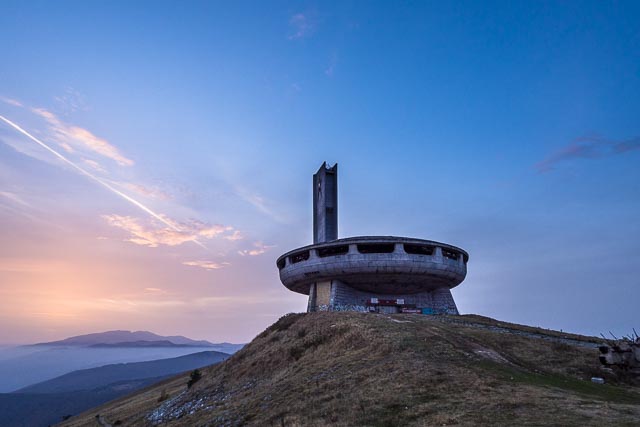
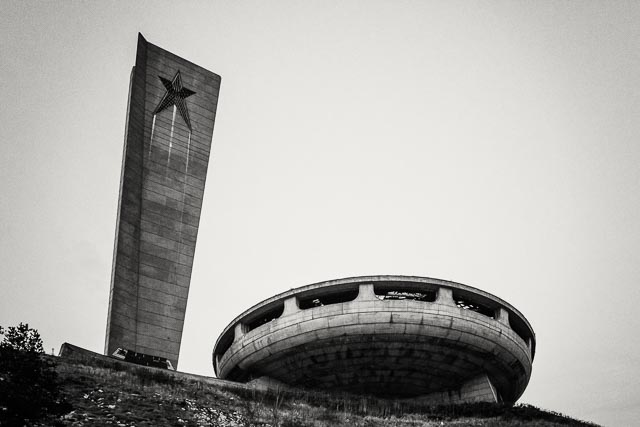
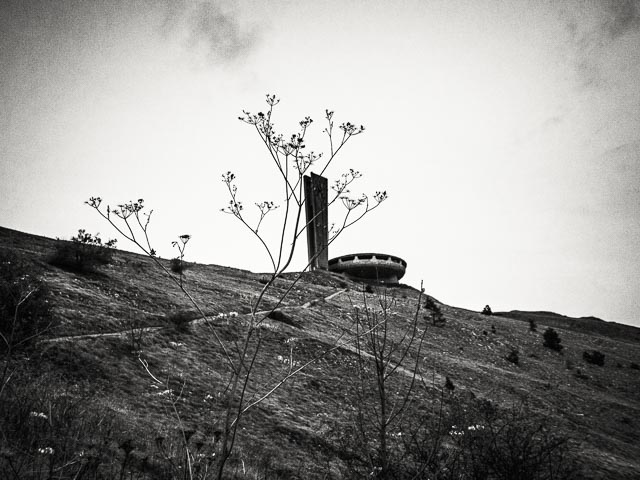
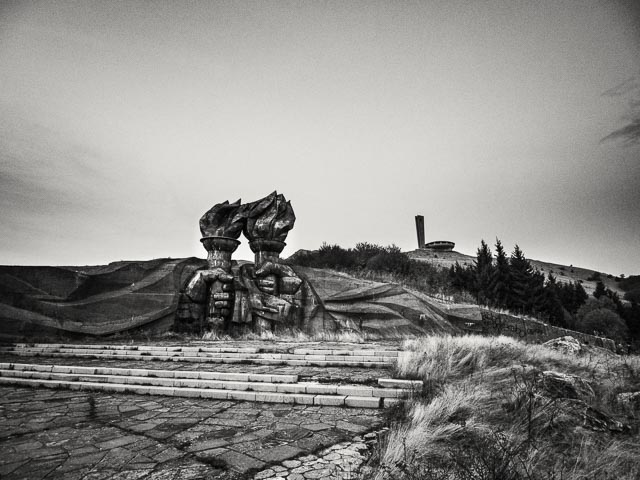
In 2016 I visited Bulgaria to photograph the now often forgotten architecture and monuments of the former communist regime in Bulgaria. You can see more photographs from that trip in the Communist-era monuments in Bulgaria gallery, but I have decided to give perhaps the greatest of all Bulgarian monuments, the Buzludzha monument, a gallery of it's own.
Visiting and exploring the Buzludzha monument (properly known as the House-Monument of the Bulgarian Communist Party) was one of the most memorable experiences of my life. When I visited in 2016 getting inside was fairly easy… you had to crawl though a small window 2 meters or so from the ground, but someone had driven nails into the wall under the window to provide foot holds!
But I understand that getting inside is now impossible with guards posted around the building to prevent people from trying. But even from the outside the retro-futuristic brutalism of the Buzludzha monument is one of the modern wonders of the world, and well worth seeing.
The Buzludzha monument was designed by Georgi Stoilov, with construction beginning in 1974, and was opened and inaugurated in 1981 as part of Bulgaria's celebrations of the 1300th anniversary of the founding of the Bulgarian state.
Calling the Buzludzha monument a "monument" is bit misleading! It was a full scale and fully working building, consisting of a circular amphitheatre-like auditorium capable of seating several hundred people, and an adjoining 70m tower with an observation platform at the top and a lift to provide access. Towards the top of the tower there are two enormous red glass stars, 2 or 3 stories tall, one on the north side and one on the south. They were illuminated on special occasions and could be seen for hundreds of miles around.
A host of Bulgaria's greatest artists and architects worked along side Stoilov on the project. The interior was positively luxurious, with marble floors, a copper clad ceiling, and walls covered with amazing mosaics. The building is located on the very remote Buzludzha Peak in the mountains of central Bulgaria, and it was intended as a purely ceremonial building to be used on Bulgaria's most important state occasions (such as May Day celebrations).
The building was closed in 1989 when Bulgaria's communist regime was ousted, just 8 years after it opened. It currently remains closed and in a derelict state, and although the work has started on its preservation and conservation, the future of the Buzludzha monument remains uncertain.
Links
- Buzludzha project
Information about Dora Ivanova's proposals for the conservation and reuse of the Buzludzha monument, and about on-going efforts to stabilise the building to prevent further decay. - buzludzha-monument.com
Another great resource for both the history of the Buzludzha monument and on-going plans for its preservation. - What To Do With Communist Decay
An in-depth article by Ashira Morris about the Bulgaria's approach to its communist past in general and the Buzludzha monument in particular. - Buzludzha monument on Wikipedia
Useful for some additional background information on the Buzludzha monument.